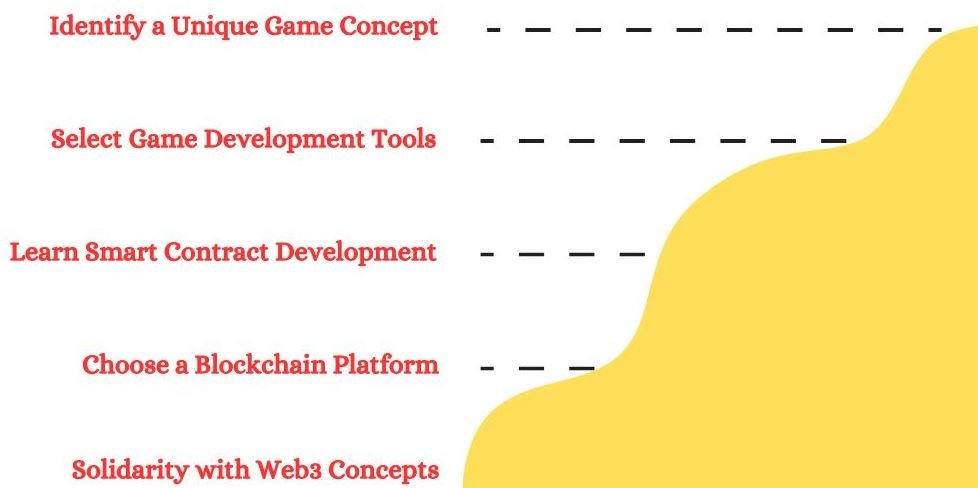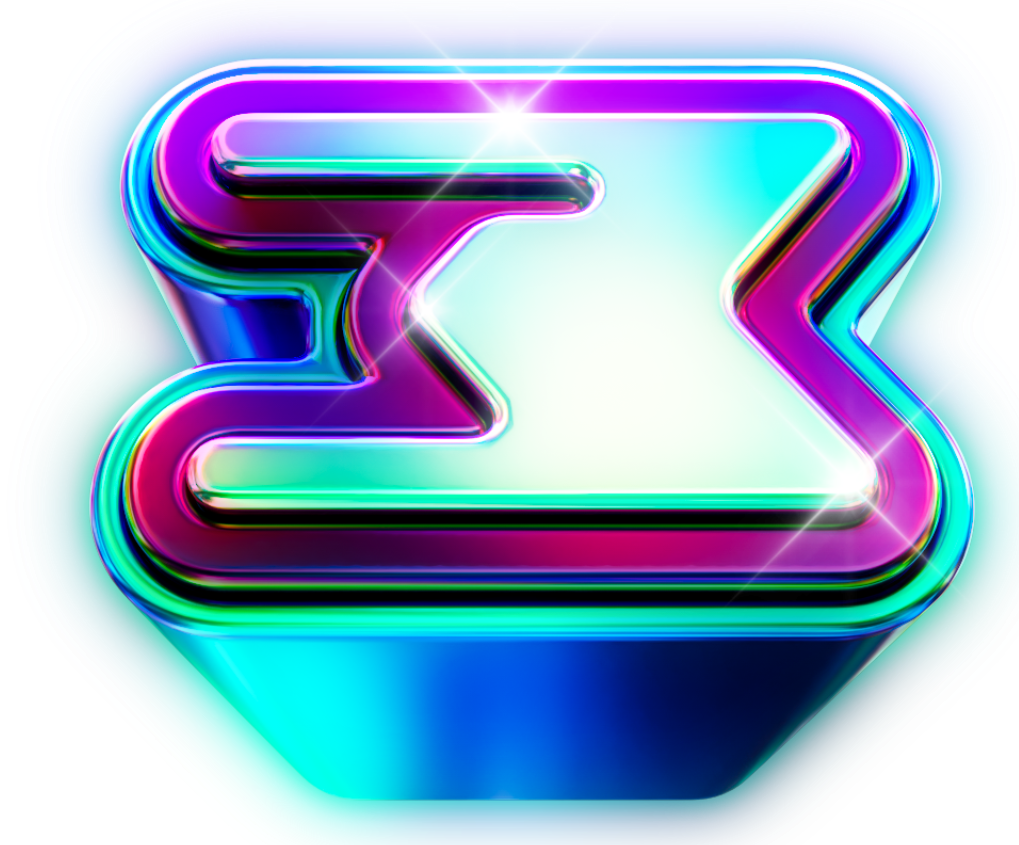The gaming landscape is constantly evolving, and the emergence of Web3 technology is shaking things up in a major way.
This guide serves as a comprehensive guide for anyone curious about Web3 game development, exploring its core concepts, potential benefits, and the practicalities of getting started.
What is Web3 Game Development?
Web3 game development refers to the creation of video games that leverage the power of Web3 technologies like blockchain, cryptocurrencies, and non-fungible tokens (NFTs).
Unlike traditional games where assets are controlled by the developers, Web3 games empower players with true ownership of in-game items and characters. This paradigm shift unlocks exciting possibilities for player engagement, economic models, and community building.
Core Concepts of Web3 Games
- Blockchain Technology: Blockchain acts as the foundation for Web3 games, providing a secure and transparent way to record ownership and transactions. Imagine a digital ledger that keeps track of who owns what in the game world, ensuring immutability and trust.
- Cryptocurrencies: Cryptocurrencies like Bitcoin or Ethereum can be used within Web3 games for various purposes. They can function as in-game currencies for buying and selling items, or serve as rewards for players.
- Non-Fungible Tokens (NFTs): NFTs are unique digital tokens representing in-game assets like characters, weapons, or virtual land. Ownership of these NFTs is recorded on the blockchain, allowing players to truly own and trade them.
- Decentralized Applications (dApps): Web3 games are often built as dApps, meaning they run on decentralized networks instead of centralized servers. This fosters a more open and community-driven environment.
Benefits of Web3 Game Development
Web3 game development offers a multitude of advantages for both players and developers:
- Enhanced Player Ownership: Players have verifiable ownership of their in-game assets through NFTs. This ownership extends beyond the game itself, allowing players to trade or sell their items on external marketplaces.
- New Economic Models: Web3 games can introduce “play-to-earn” mechanics, where players can earn cryptocurrencies or NFTs through gameplay. This creates a new earning potential for dedicated players.
- Stronger Communities: The ownership aspect fosters a sense of community ownership within Web3 games. Players become stakeholders in the game’s success, potentially influencing its development through Decentralized Autonomous Organizations (DAOs).
- Greater Transparency: Blockchain technology ensures transparency in transactions and ownership. Players can easily verify the authenticity and history of in-game items.
- Increased Security: Blockchain-based ownership offers a more secure way to store and manage in-game assets compared to traditional methods.
Getting Started with Web3 Game Development
So you’re intrigued by the possibilities of Web3 game development? Here’s a breakdown of the initial steps:
- Solidarity with Web3 Concepts: Gain a fundamental understanding of blockchain technology, cryptocurrencies, and NFTs. Numerous online resources and courses can equip you with the necessary knowledge.
- Choose a Blockchain Platform: Popular options for Web3 game development include Ethereum, Solana, and Polygon. Each platform has its advantages and limitations, so choose one that aligns with your game’s specific needs.
- Learn Smart Contract Development: Smart contracts are self-executing contracts on the blockchain that govern the rules and functionalities of Web3 games. Languages like Solidity are commonly used for smart contract development.
- Select Game Development Tools: While some Web3 game development pioneers build everything from scratch, many existing game engines like Unity and Unreal Engine are now adding functionalities for Web3 integration.
- Identify a Unique Game Concept: Don’t just jump on the Web3 bandwagon! Develop a compelling game concept that leverages the unique benefits of Web3 technologies, not just shoehorn them into an existing idea.

Essential Tools for Web3 Game Development
Several tools have become instrumental in the Web3 game development landscape:
- Blockchain Development Kits (BDKs): BDKs simplify the process of integrating blockchain functionalities into your game by providing pre-built libraries and tools.
- NFT Marketplaces: Popular NFT marketplaces like OpenSea or Rarible can be integrated with your game, allowing players to seamlessly buy, sell, and trade their in-game NFTs.
- Oracles: Oracles act as bridges between the game world and the real world, feeding external data into the blockchain. This enables features like real-world price fluctuations affecting in-game economies.
- Wallets: Players will need crypto wallets to store their in-game assets and cryptocurrencies. Support for popular wallets like MetaMask is crucial for a smooth user experience.
Best Practices for Web3 Game Development
Building a successful Web3 game goes beyond just implementing the technology. The following are best practices to consider:
- Focus on Fun Gameplay: While Web3 features are exciting, the core of any game is still engaging and enjoyable gameplay. Prioritize creating a fun and balanced game experience that keeps players coming back for more, not just the potential to earn.
- Prioritize User Experience (UX): The user experience within your Web3 game should be smooth and intuitive. Ensure players understand how blockchain elements work within the game and how to manage their in-game assets.
- Build a Strong Community: Web3 thrives on community engagement. Foster open communication with your player base, gather feedback, and involve them in the game’s development process.
- Ensure Security: Blockchain technology offers security benefits, but vulnerabilities can still exist. Implement robust security measures to protect player assets and prevent hacks.
- Balance Play-to-Earn Mechanics: While play-to-earn models can be attractive, prioritize balanced gameplay over excessive grinding for rewards. A sustainable in-game economy is crucial for long-term success.
- Embrace Transparency & Fairness: Maintain complete transparency about tokenomics, game mechanics, and potential risks. Avoid practices that exploit players or create unfair advantages.
- Comply with Regulations: The regulatory landscape surrounding Web3 is still evolving. Stay informed about relevant regulations and ensure your game adheres to them.
Tips for Optimizing Web3 Game Development
Here are some additional tips to streamline your Web3 game development process:
- Start Small and Iterate: Don’t try to build a sprawling Web3 metaverse on day one. Start with a smaller, well-defined concept and iterate based on player feedback.
- Leverage Existing Solutions: Take advantage of existing tools and frameworks like BDKs and NFT marketplace integrations to save development time and resources.
- Assemble a Skilled Team: Building a Web3 game often requires a diverse team with expertise in blockchain development, game design, and tokenomics.
- Explore Alternative Funding Models: Beyond traditional game funding, consider exploring fundraising options like Initial Coin Offerings (ICOs) or play-to-earn models to support your development.
- Stay Updated on Web3 Trends: The Web3 landscape is constantly evolving. Keep yourself updated on the latest advancements and adapt your game accordingly.
The Future of Web3 Gaming
The potential for Web3 gaming to revolutionize the gaming sector is high. As development progresses, we anticipate witnessing:
- More Immersive Experiences: Web3 can potentially unlock deeper player immersion through true asset ownership and interoperable virtual worlds.
- Enhanced Player Agency: Players may have more control over in-game economies and governance decisions through DAOs and community-driven development.
- Evolving Business Models: Play-to-earn mechanics, along with NFT sales and secondary marketplaces, could create entirely new revenue streams for developers and players alike.
- Integration with the Metaverse: As the concept of the metaverse continues to develop, Web3 games are likely to play a significant role in shaping this shared virtual space.
Read: Top Web3 Jobs
Conclusion
Web3 game development offers a unique blend of technological innovation, player empowerment, and exciting gameplay possibilities. By understanding the core concepts, best practices, and future potential of Web3 games, you can make informed decisions about embarking on this exciting new frontier in the gaming industry.
Remember, a successful Web3 game is ultimately about creating a fun and engaging experience that leverages the power of Web3 technologies to enrich the overall gameplay experience.
FAQs About Web3 Game Development
Q1. How do I get into Web3 gaming?
- Learn Web3 Basics: Gain a solid understanding of blockchain, crypto, and NFTs.
- Choose a Blockchain Platform: Popular options include Ethereum, Solana, and Polygon.
- Master Smart Contract Development: Smart contracts govern the rules and functionalities of the game.
- Select Game Development Tools: Existing engines like Unity and Unreal Engine are adding Web3 functionalities.
- Develop a Unique Game Concept: Don’t just add Web3 for the sake of it, create a compelling game first.
Q2. How many Web3 gaming companies are there?
While there’s no single central registry, some resources track Web3 development. Analyses suggest there are likely dozens (possibly in the range of 29-100) of established Web3 gaming companies globally, with many smaller studios and startups emerging.
Q3. How big is the Web3 gaming market?
Market research suggests the Web3 gaming market is in its early stages but poised for significant growth. Some estimates project the global Web3 gaming market to reach billions of dollars in the coming years.






